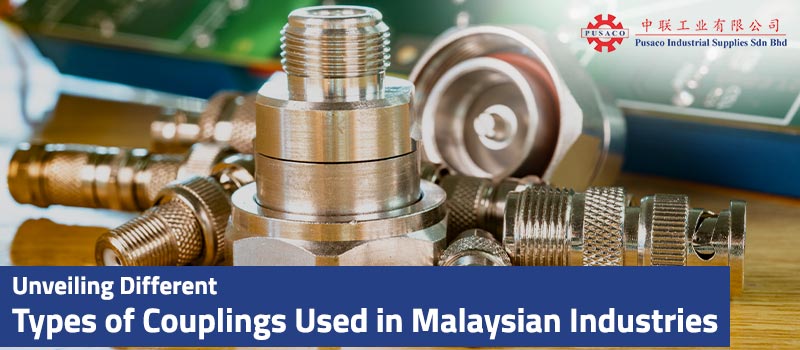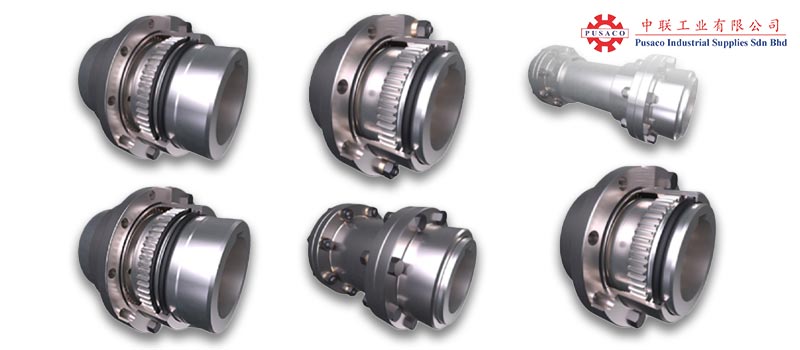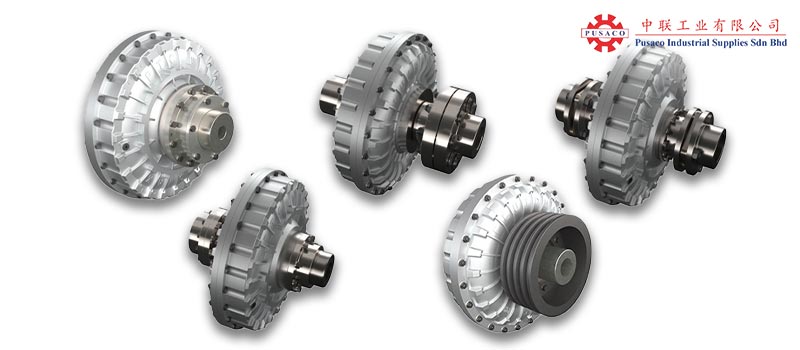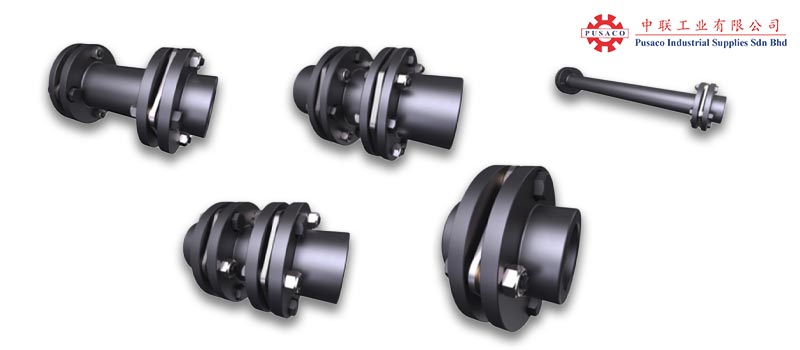
The Malaysian industrial landscape thrives on the efficient transmission of energy in machinery or equipment. Couplings may appear simple, yet they play an important function in the systems.
You may already have some understanding of couplings, but in this article, we’ll delve deeper. We’ll explore what couplings are, the various types available, and their practical uses.
What is a Coupling?
A coupling is a mechanical device that joins two identical or different shafts in a machine. The fundamental function of couplings is to precisely transmit power/torque from the drive side to the driven side of a rotating system.
Couplings are used when shafts are in a straight line, and only parallel shafts allow power to be delivered via various gear combinations or drives.
From heavy manufacturing to delicate precision engineering, couplings are used in a variety of sectors in Malaysia, with each kind suited to individual demands and requirements.
General Uses of Coupling
A shaft coupling is a prevalent machine component utilized across various conditions and environments in machinery. Its primary role is to transmit power from the driving shaft to the driven shaft.
Other typical applications of coupling are mainly as follows:
- Connecting two separately manufactured components
- Absorbing vibration generated by rotating units
- Minimizing the transmission of shock loads
- Compensating for mounting errors or misalignment
- Protecting against overloads by transferring them from one shaft to another
Types of Couplings
It is important to understand the capabilities and distinctions among various types of couplings before making a purchase. In this section, we will provide insights into the available types of couplings in Malaysia and how they work.
Flange Coupling

Flange coupling is a type of coupling used to connect two shafts together. It comprises two flanges equipped with bolt holes, which are fastened together using bolts to transfer torque effectively from one shaft to another.
This coupling is essential for Malaysian industries as it helps reliably transfer power and torque in various machinery applications. The coupling’s strength, flexibility, and adaptability make it essential in different sectors, boosting efficiency and competitiveness in manufacturing.
Advantages:
- High Torque Capacity
Flange coupling is suitable for heavy-duty applications due to its high torque capacity. - Precise Shaft Alignment
Flange couplings maintain the precise alignment of the connected shafts, reducing wear and tear and increasing the lifespan of the equipment. - High Torsional Flexibility
Flange couplings offer significant torsional flexibility, ideal for applications needing high flexibility.
Disadvantages:
- Complex Installation
Proper installation of flange coupling types requires precision and expertise, especially when aligning shafts, which can be time-consuming and labor-intensive. - Higher Cost
Flange coupling types are generally more expensive compared to sleeve or clamp couplings due to their complex design. - Limited Damping Capacity
Flange couplings have limited damping capacity, making them unsuitable for applications where shock and vibration need to be absorbed.
Gear Coupling

Gear couplings are a modified flange coupling types in which the flange sleeves and hubs are joined together. It is a flexible coupling that is well-suited to heavy-duty applications in industries such as mining, steel manufacturing, and marine engineering.
They transfer large torque loads while adjusting for shaft misalignment, both angular and parallel. Gear couplings are widely used in Malaysia’s heavy industries because of their durability and dependability in challenging settings.
Advantages:
- High Torque Capacity
Gear coupling is suitable for heavy-duty applications due to its high torque capacity. - Easy Maintenance
Gear couplings require little maintenance due to their simple design. - Angular Misalignment
Gear couplings can accommodate angular misalignment between shafts.
Disadvantages:
- Higher Cost
Despite its straightforward design, gear couplings are still pricier than other types of couplings. - Limited Flexibility
Gear couplings are not appropriate for applications that demand a great degree of flexibility, due to their limited flexibility. - Noise and Vibration
Gear couplings have the tendency to generate noise and vibration, especially when operating at high speeds.
Fluid Coupling

Fluid couplings, also known as hydraulic couplings, are a specific form of coupling that transfers torque from one shaft to another using hydraulic fluid. Aside from the hydraulic fluid, fluid coupling consists of two more components: a pump and a turbine.
Each fluid coupling shaft is rigidly connected to an impeller, and fluid flows between them. It is widely used in industrial and maritime applications where controlled power transmission startup is essential.
Advantages:
- Smooth Operation
Fluid couplings offer gradual acceleration and deceleration, promoting gentle operation and minimizing equipment wear. - Overload Protection
Fluid couplings serve to protect equipment from overload by absorbing and dissipating excess energy. - No Mechanical Contact
Fluid couplings operate without any mechanical contact between the input and output shafts, thereby decreasing wear and maintenance needs.
Disadvantages:
- Less Efficient
Fluid couplings may exhibit lower efficiency levels when compared to other coupling types, leading to energy loss. - Lower Torque Capacity
Fluid couplings have a lower torque capacity compared to other coupling types. - Sensitivity to Temperature
Fluid couplings may be prone to performance alterations due to temperature fluctuations, impacting their operational efficiency.
Disc Coupling

A high-performance motion control (servo) coupling called a disc coupling is made to accommodate shaft misalignment while serving as the torque transmission element by joining two shafts. Its purpose is to maintain torsion strength at high torque loads while maintaining flexibility.
They are essential in sectors like aerospace and automotive manufacturing that demand high-speed, high-precision machinery because of their precision and accuracy.
Advantages:
- High Misalignment Capability
Disc couplings can tolerate substantial misalignments between the linked shafts, lowering the risk of damage to connected equipment and allowing for easier installation. - Simple Design
Disc couplings have a straightforward design with fewer moving parts compared to other couplings. - High Torque Capacity
Disc couplings can withstand large torque loads, making them suited for heavy-duty applications that demand significant power transfer.
Disadvantages:
- Sensitive to Misalignment
Disc couplings can handle misalignment, but they’re more sensitive to angular misalignment than other types. - Limited Axial Movement
Disc couplings may have limited axial movement capabilities, which might be a drawback in applications that need large axial movement. - Limited Flexibility
Disc couplings are stiff, so they don’t flex much. This makes them less suitable for handling torque changes compared to other couplings.
Grid Coupling

A grid coupling consists of two shaft hubs, a metal grid spring, and a split cover kit. Torque is transmitted between the hubs via the metal grid spring.
Similar to metallic gear and disc couplings, grid couplings can handle high torque density. They are a popular choice for connecting rotating shafts in machinery, particularly in Malaysian industries
Advantages:
- Easy Maintenance
Grid couplings are not only easy to install and maintain, they are also can be easily removed and replaced without having to disassemble the shafts, due to their simple design. This means less time and money spent on downtime and labor. - High Misalignment Tolerance
Grid couplings can accept substantial misalignments between the linked shafts, making installation easier and lowering the risk of damage to the equipment. - Shock and Vibration Absorption
Grid couplings are designed to absorb shock and vibration, which helps protect connected equipment from damage and extends their operational lifespan.
Disadvantages:
- Limited Torque Capacity
Grid couplings may have a lower torque capacity compared to some other coupling types, making them unsuitable for high-torque applications. - Higher Cost
Grid couplings can be more expensive to install compared to simpler coupling designs. - Grid Element Wear
The grid components of grid couplings can wear with time, especially in applications with high torque or severe working conditions, resulting to decreased performance and perhaps higher maintenance costs.
Optimal Mechanical Power Transmission Coupling Designs for Malaysian Industries
Identifying the most suitable mechanical power transmission coupling designs, tailored to meet the unique demands of Malaysian industries, holds significant sway over operational efficiency, reliability, and overall performance.
Couplings play a central role in machinery systems, necessitating consideration of key factors such as torque requirements, misalignment tolerance, maintenance demands, and cost implications.
Pusaco, a premier industrial supplier in Malaysia, stands ready to assist you in pinpointing the optimal coupling solution for your specific operational requirements and environmental conditions. As your primary source for top-quality couplings sourced from leading industrial manufacturer, Power Transmission Industries (PTI), Pusaco takes pride in delivering excellence and expertise.
Reach out to the Pusaco team today to uncover the perfect coupling for your system and benefit from the unparalleled service provided by their experienced specialists.
Have A Question?
Get in touch with us now!


